As the summer heats up, the rising temperatures make our homes unbearable. You need a quality, trusted air conditioning unit to beat the heat. Two of the most popular air conditioners on the market are Tempstar and Trane. If you need help choosing between the two, we have conducted extensive research to help you choose the perfect one.
If you are okay with spending a bit more money on an efficient and convenient AC, Trane is the best choice for you. Priced at $3,200 to $7,000, their top-of-the-line ACs maximize energy efficiency with the added feature of Comfort Link Technology to control the temperature through your tablet or phone.
If budget is your concern, you should choose Tempstar. At a thousand dollars less, you can have a two-speed fan that ensures a more quiet operation.
Now that you know which AC best suits your home, let's talk more about ACs, their features, and the pros and cons of each AC brand. This may help you further decide which brand to install into your home.
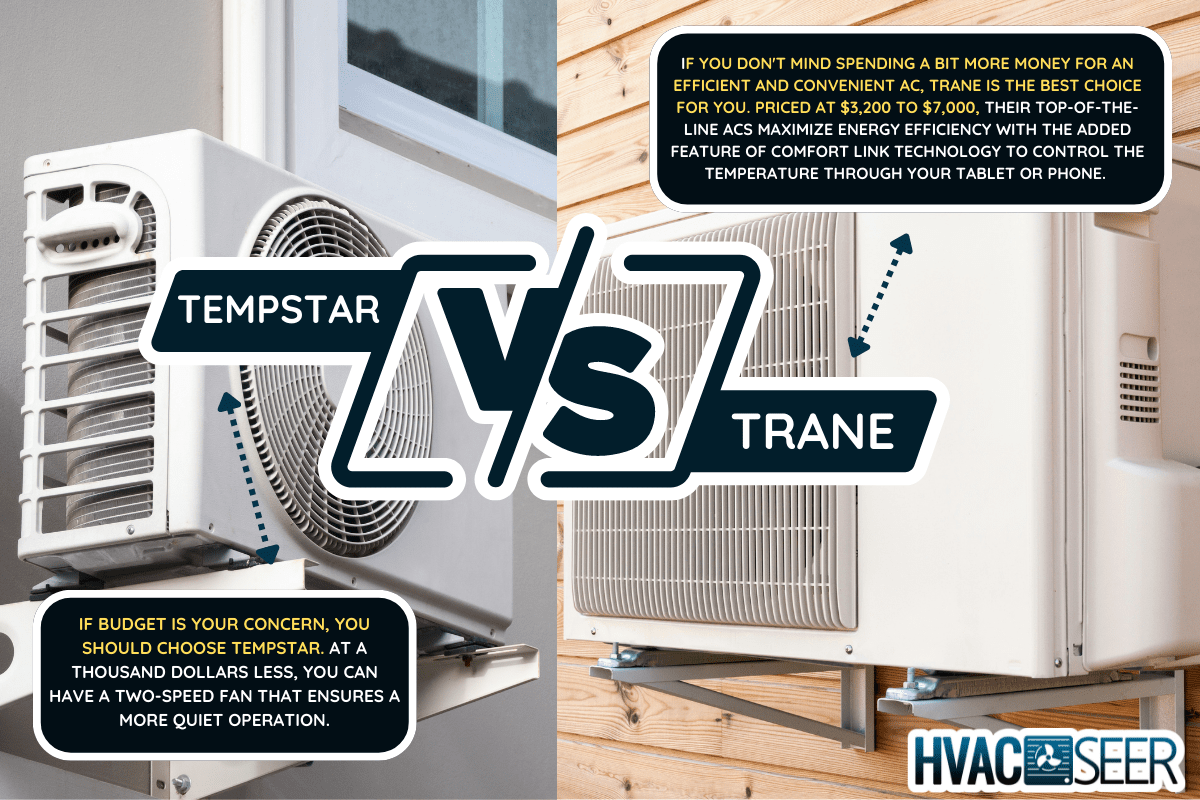
Benefits Of Air Conditioners
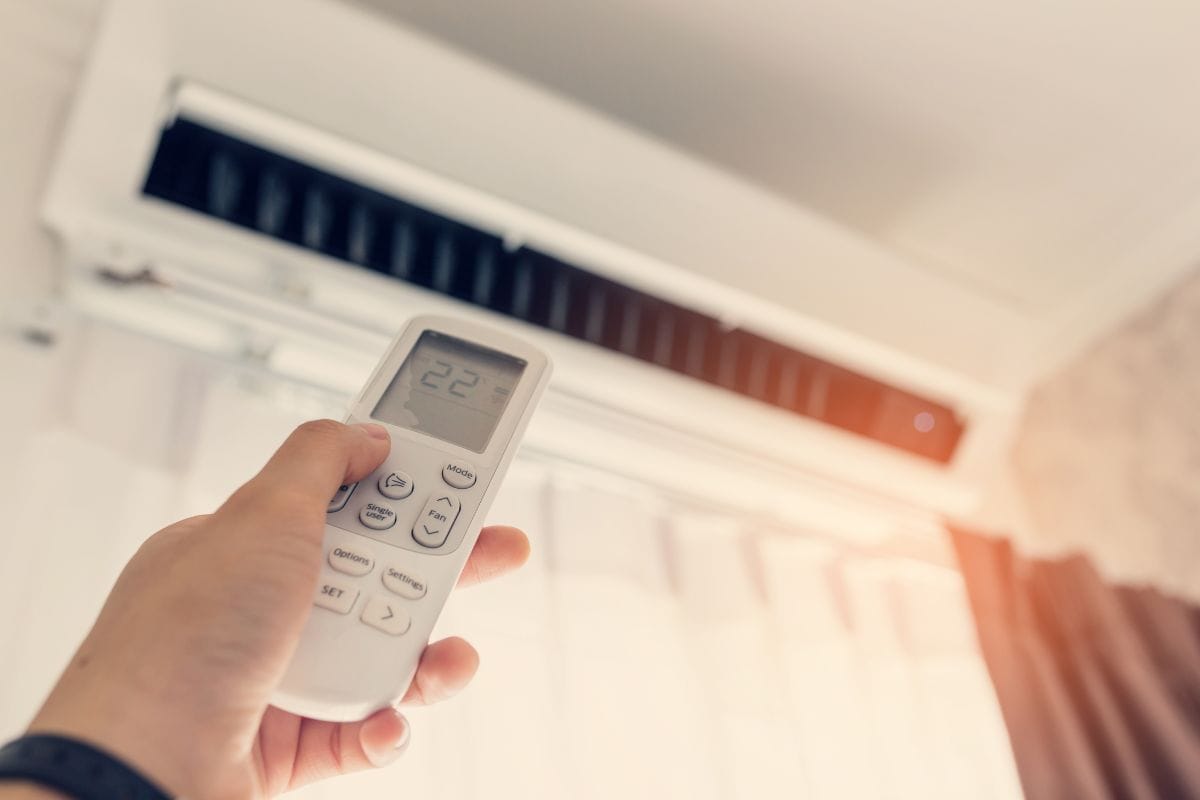
Keeping your home cool in the summer can significantly benefit your health. Air conditioning reduces the humidity linked to health concerns such as dehydration or heatstroke.
People with asthma also benefit from the filtering system of ACs that removes pollutants and other allergens in the air. Most importantly, in a time when people have the opportunity to work from home, air conditioning reduces the added stress of indoor heat.
Factors To Check When Buying AC
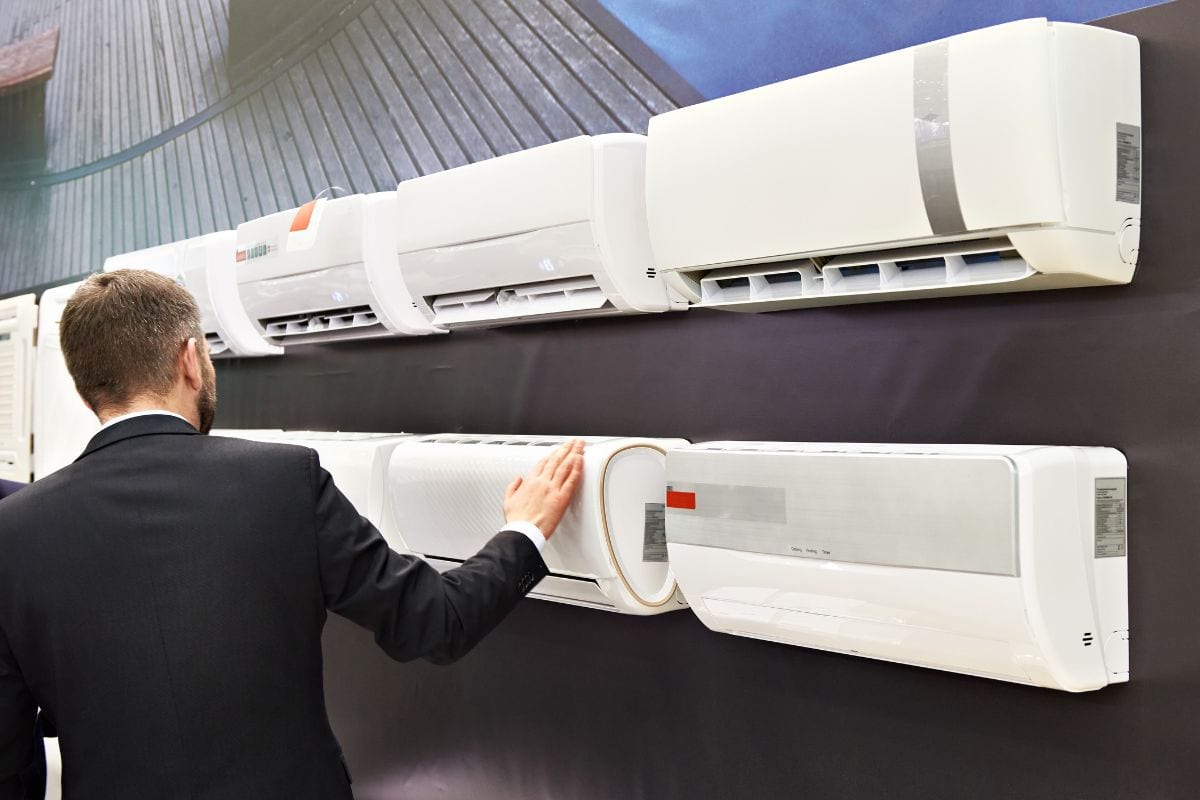
No matter how urgent buying a new AC might be, you must be mindful of what you need to check before making that big purchase. If you don't consider these things, you might end up with an AC that is not suitable for you and spend more by buying a new one.
Capacity
The size of the space where you'll be installing the AC must match the unit's capacity. A small unit in a large room will work harder and use more power to cool the area. On the other hand, using an oversized AC in a small room might be overkill and leave the room damp and clammy.
To determine the capacity of the AC unit required for any room, calculate the area to be cooled (length multiplied by width). Then multiply this by 25 BTU. This will allow ample cooling on a hot summer day.
For example, if your room is 20 feet long and 15 feet wide, then you have 300 square feet of area. Multiply this by 25 BTU, and you get a 7,500 BTU capacity required for the room.
Energy Efficiency
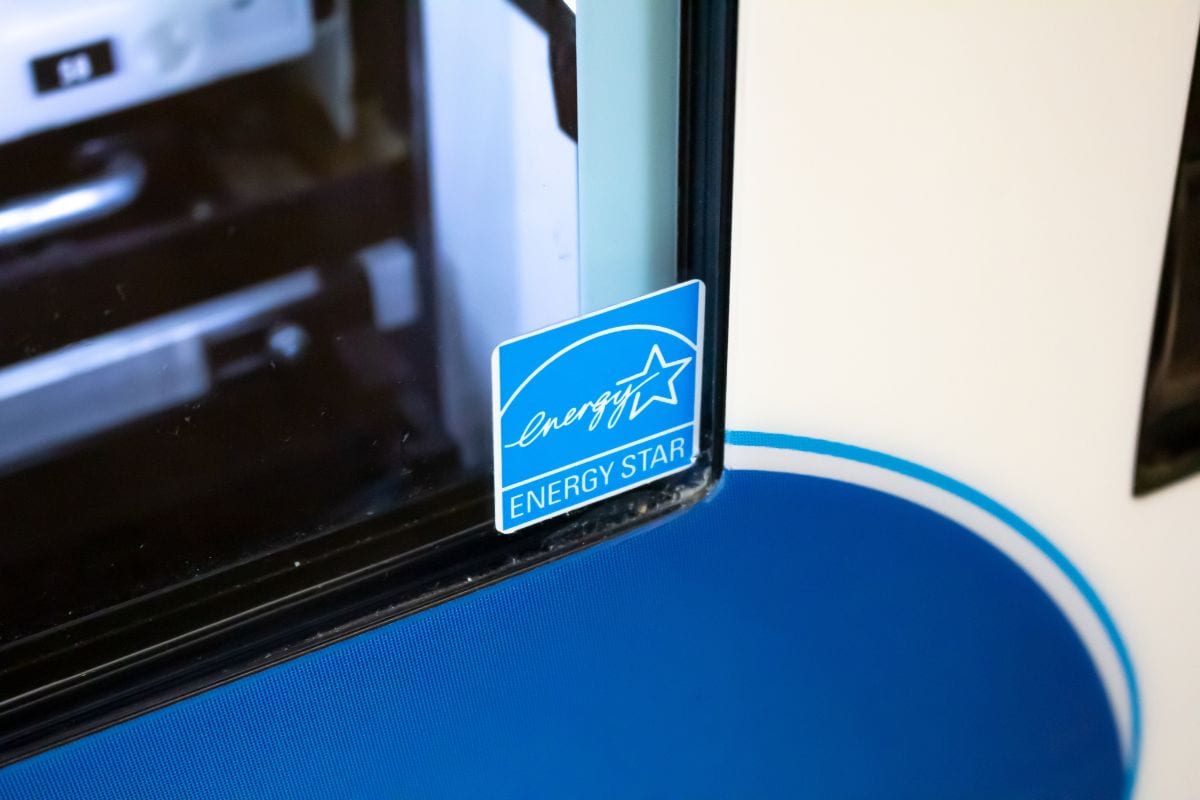
Air conditioners have an Energy Efficiency Ratio (EER) and Seasonal Efficiency Ratio (SEER) from the Bureau of Energy Efficiency. They indicate the unit's cooling capacity ratio to the power input.
The only difference between the two ratings is that SEER measures the performance of the AC over the entire season, varying from outside temperatures of 65 to 104 degrees Fahrenheit.
Higher EER and SEER ratios mean the AC uses less power to run and thus uses less energy. This reduces your electricity bills.
You should also check the Energy Star label when buying a new AC unit. This is a program created by the U.S. Environmental Protection Agency to help consumers identify products that save money while protecting the environment.
Units with Energy Star have at least 14.5 SEER and can help you save up to 20% on your bills.
Split Or Window Type AC
Generally speaking, window-type AC units suit smaller rooms since they can be easily installed. They also tend to be cheaper, so you can have a comfortable room without breaking the bank.
Split types have more features but with added costs. They have two separate units: an indoor unit that has the blower and filter, and an outdoor unit that has the compressor. They are better suited to larger rooms, since they usually have a larger capacity.
Air Quality
To ensure you maximize the health benefits of air conditioning, you might want to check the filter features of the unit. People with asthma usually experience difficulties when exposed to air with dust mites and other allergens.
A quality filter improves the air quality by removing germs, smoke, and other odors. It is also worth it to look for a unit with good dehumidification features. Reducing the humidity of any room increases cooling and comfort.
Installation & Maintenance
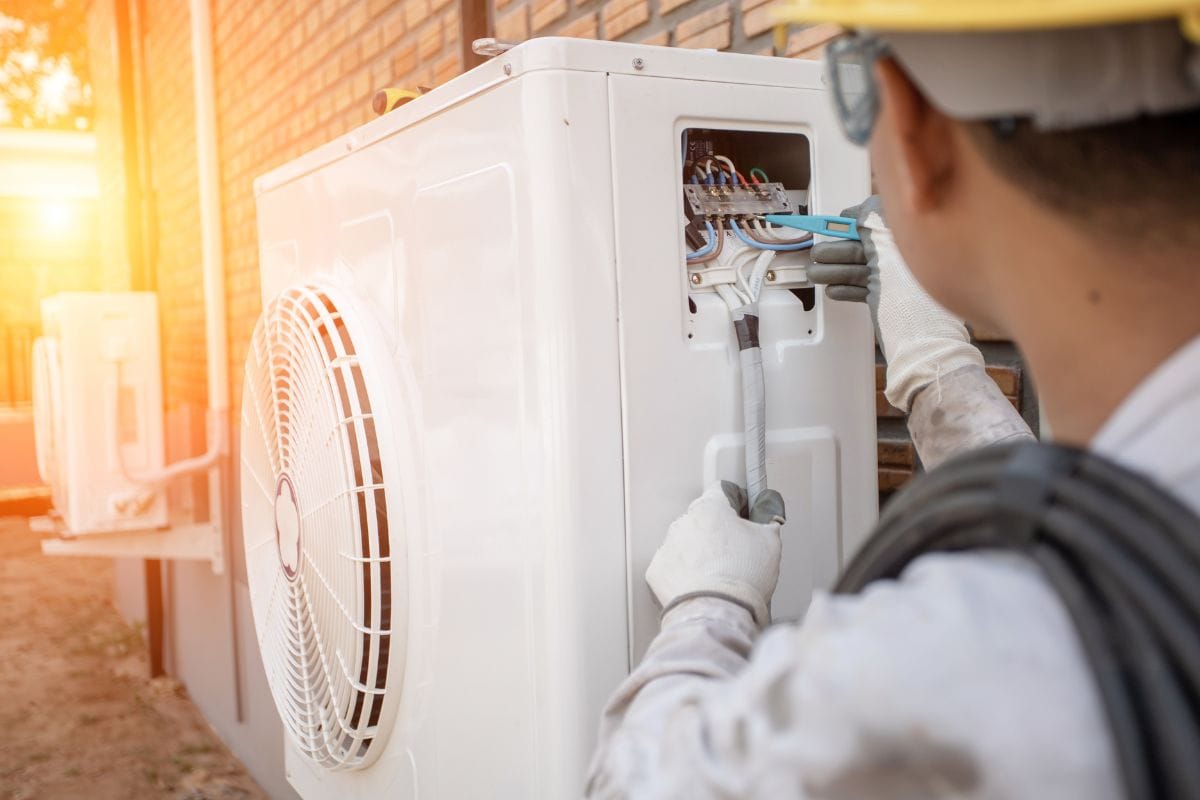
When buying new air conditioning units, the installation cost adds up to the total expenses of the purchase. Window-type AC installation costs less compared to split-type AC.
Take note that improper installation affects the performance of the unit. In addition, it may be hel monitor the frequency of maintenance needed by the AC. Regular maintenance increases the lifespan of the air conditioner.
Other Features To Look For
Inverter units are preferred nowadays as they significantly reduce energy consumption while increasing efficiency. Some also add anti-bacterial filters, which may be helpful, especially when you have newborn babies.
Thanks to technological advancements, smart ACs are now available that can be enabled using a Wi-Fi network. Smart systems allow remote control of the AC units, voice commands, and automatic temperature control.
Trane vs. Tempstar Air Conditioner
Trane and Tempstar are both reliable air conditioning brands. Their entry-level units are relatively similar. The difference between the two brands lies in their top-of-the-line units.
Trane
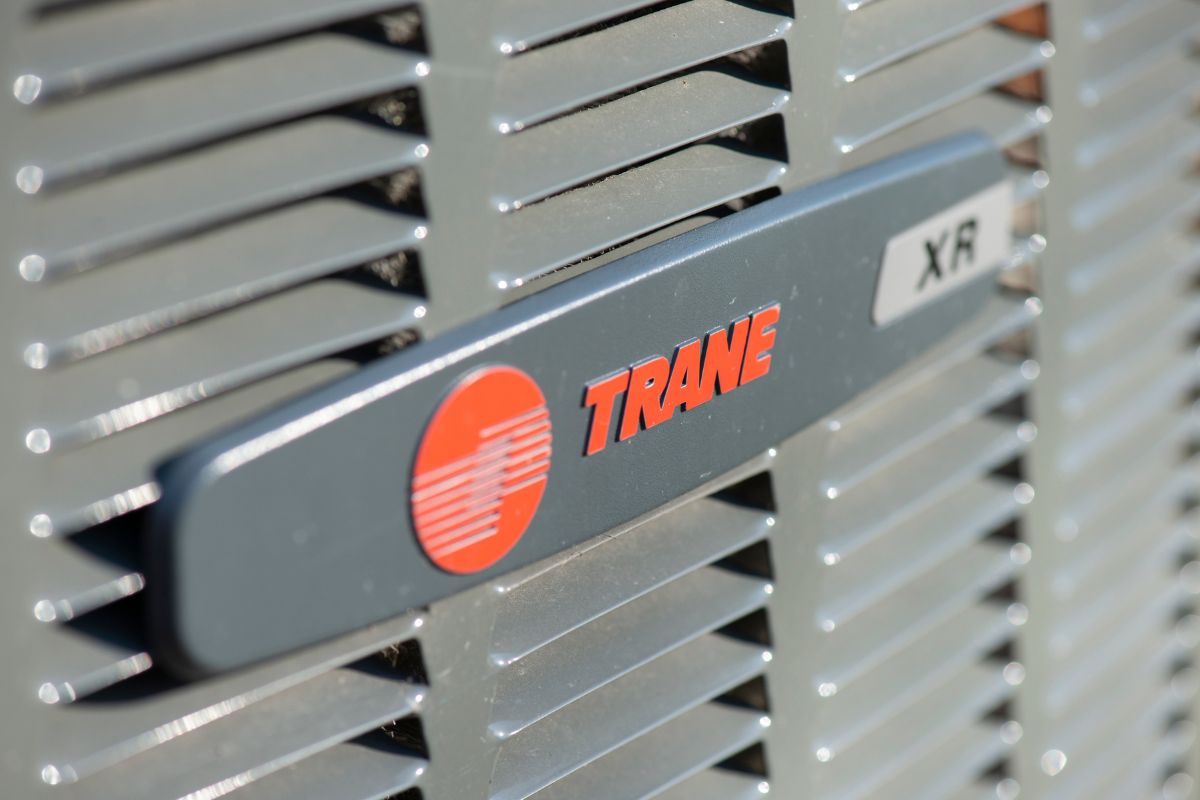
Trane Technologies Inc. has a reputation for producing high-quality air conditioners. It is the world's leading HVAC solutions company.
However, quality comes with a price, as they sell one of the most expensive units on the market. Although it now runs under American Standard, Trane still maintains its impeccable standard in quality.
Among the air conditioning units produced by Trane, the XL20i stands out. It has an efficiency rating of up to 22, the highest efficiency rating across all air conditioning units.
The unit implements the ComfortLink™ II Communicating Capability that automatically configures for optimum performance.
As mentioned, the high quality offered by Trane Technologies comes with a price. The top-of-the-line unit costs $5000 to $8000 depending on the add-ons and installation costs.
This might not be economical for some consumers. They may opt for a cheaper but equally competitive air conditioning brand.
Tempstar
The premium line of air conditioners produced by Tempstar prides itself on its quiet and efficient cooling system. Combined with the Ion™ System, it has outstanding performance in providing ultimate comfort for your homes.
At $2000 to $2500, Tempstar Smartcomfort TXC is a competitive unit at a more budget-friendly price. It has a durable compressor and an acceptable SEER rating of 16. This is an excellent find for a unit with a two-stage scroll compressor that ensures dehumidification and quiet operation.
However, there have been complaints from users who have experienced Tempstar units failing. Although there is a warranty, breakdowns of the units may affect the reliability of the brand as a whole.
To Wrap Things Up
Air conditioning units are a beneficial addition to any household. They ensure cooling and keep the humidity of the room at bay. However, there are several factors to check when buying a new unit.
With the increasing cost of electricity, you should check the unit's energy efficiency rating to save money. There are also smart air conditioning units that allow you to control the HVAC system remotely. Some even have features that automatically adjust the temperature for optimum use.
Air conditioning units produced by Trane Technologies tend to be more expensive than those made by Tempstar. However, if budget is not a problem for you, Trane units are your best bet, as they are reliable and were even hailed as one of the top AC units of 2022.
Tempstar produces economically-friendly and competitive units as well. But reliability issues may come into play, as there have been reported failures of Tempstar units. You should select the air conditioner that fits your priorities and preferences.
If you enjoyed reading this article, read our other helpful posts below:
Does A New Furnace Come With A Coil?
Why Does My Honeywell Air Purifier Keep Shutting Off?
Coleman RV AC Tripping Breaker – Why And What To Do?
